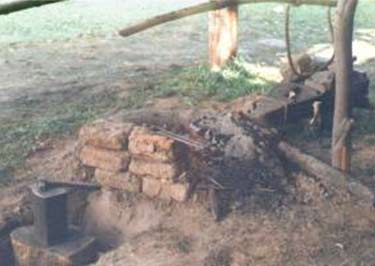Regardless of the method of obtaining, the most important ingredient of spongy iron and contemporary steel (apart from iron itself) is coal. Malleability of iron, its hardness, fragility and impact resistance, thus the most important qualities of a material depend on the percentage content of coal. From this material a pommel of a sword, a knife, a buckle of a belt or a flint were forged.
Blacksmiths of the past did not know the basic qualities of steel and iron but they could put in practice many centuries of experience of their predecessors. They did not know why iron should be forged only when it acquires a particular colour. They did not know either why iron hardens if it is heated and then is cooled rapidly. They did not know why it happened in this particular way, but they knew that they were to do their job in this way, as it was the way developed by experience of their forefathers, a good and practised way.
A contemporary blacksmith and metallurgist know the theory of processes taking place during forging or casting, however they have forgotten about many forging techniques used centuries ago. The basic condition necessary for reconstruction of an iron forging process was reconstruction of a blacksmith's stand and especially such elements as a furnace, bellows and a set of tools.

RECONSTRUCTION OF AN ANCIENT FORGING SHOP




